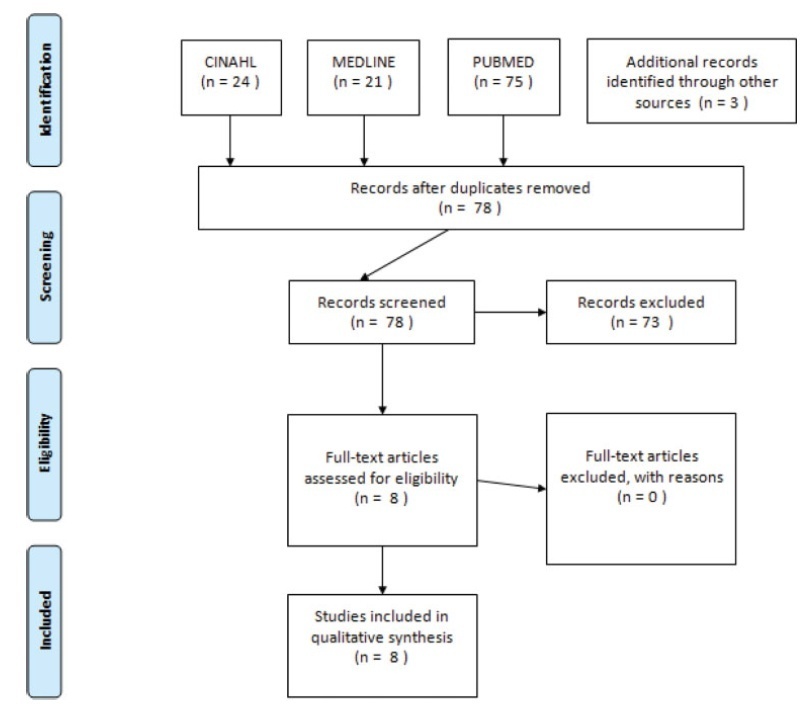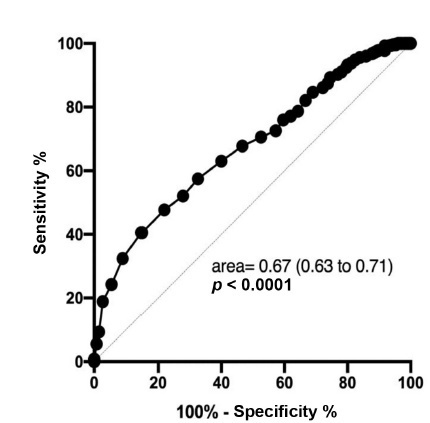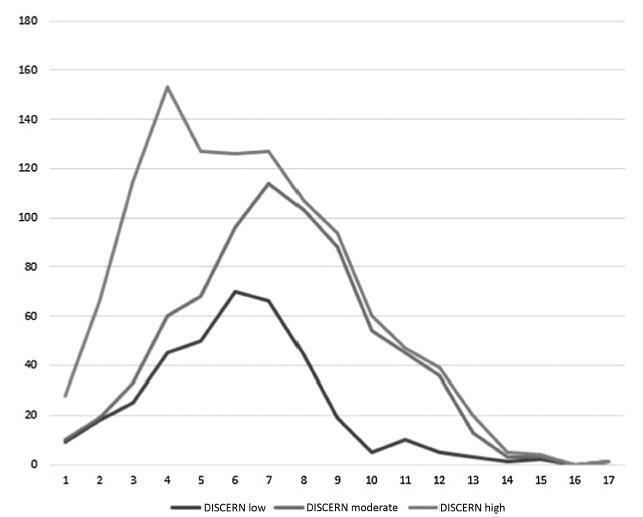Summary
Revista Brasileira de Ginecologia e Obstetrícia. 2016;38(11):545-551
To determine methods of contraception used by adolescents before and after pregnancy.
A cross-sectional study was performed, and data were collected from medical records of all teens in puerperal consultation at the Hospital da Mulher - José Aristodemo Pinotti (Caism), Universidade Estadual de Campinas (CAISM), São Paulo, Brazil, between July 2011 and September 2013. The inclusion criterionwas being 10 to 19 years old, and the exclusion criterion was having a first consultation 90 days after childbirth. Statistical analyseswere performed with averages, standard deviations, percentages, correlations and Fisher's exact tests using the SAS program, version 9.4.
A total of 196 adolescents in postpartum consultation were included (44 days after childbirth on average). The majority was older than 14 years (89%), with an average age of 16.2 years, and the most were exclusively breast-feeding (70%). Before pregnancy, the use of any contraceptive methods was mentioned by 74% adolescents; the most frequent use was combined oral contraceptive followed by condom. The main reason for abandoning the use of contraception was the occurrence of an unintended pregnancy (41%), followed by reports of side effects (22%), behavior issues (18%) and desire for pregnancy (16%). A positive correlation was found between the age of the adolescent at the moment of childbirth, the age of menarche (r = 0.3), and the first sexual intercourse (r = 0.419). Vaginal delivery occurred in 76% of the cases. After birth, depot medroxyprogesterone acetate (DMPA) was the contraception method most frequently used (71%), followed by oral contraceptives (11.8%) and intrauterine devices (IUDs, 11.2%).
The most prescribed contraceptive method before pregnancy in adolescents who had childbirth was combined oral contraceptives. Many of the study participants had an unintended pregnancy. After childbirth, the most used contraceptive method was DMPA. To improve contraception and reduce the chance of unintended pregnancies among adolescents, we should promote the use of long-acting reversible contraceptives (LARCS).
Summary
Revista Brasileira de Ginecologia e Obstetrícia. 2021;43(7):545-559
Fetal growth restriction (FGR) occurswhen the fetus does not reach its intrauterine potential for growth and development as a result of compromise in placental function. It is a condition that affects 5 to 10% of pregnancies and is the second most common cause of perinatal morbidity and mortality. Children born with FGR are at risk of impaired neurological and cognitive development and cardiovascular or endocrine diseases in adulthood. The purpose of the present revision is to perform a literature search for evidence on the detection and assessment by ultrasound of brain injury linked to FGR during fetal life. Using a systematic approach and quantitative evaluation as study methodology, we reviewed ultrasound studies of the fetal brain structure of growth-restricted fetuses with objective quality measures. A total of eight studies were identified. High quality studies were identified for measurement of brain volumes; corpus callosum; brain fissure depth measurements, and cavum septi pellucidi width measurement. A low-quality study was available for transverse cerebellar diameter measurement in FGR. Further prospective randomized studies are needed to understand the changes that occur in the brain of fetuseswith restricted growth, as well as their correlation with the changes in cognitive development observed.

Summary
Revista Brasileira de Ginecologia e Obstetrícia. 2006;28(9):545-550
DOI 10.1590/S0100-72032006000900007
PURPOSE: to evaluate muscular strength of the pelvic floor and the periurethral vessels of postmenopausal women before and after six months of soybean extract treatment. METHODS: the study was conducted on 30 postmenopausal women before and after six consecutive months of soyabean extract (100 mg/day) administration. Urinary loss and muscular strength of the pelvic floor were investigated through digital perineometer and functional evaluation. Digital color Doppler in the periurethral region was used to count the number of vessels. For statistical analysis, the paired Student t test was applied to compare the results before and after the treatment. RESULTS: twenty women reported urinary incontinence before the treatment period. The amelioration of this symptom was observed in 15 (75%) women after the treatment. Vaginal pressure (muscular strength of the pelvic floor) was 12.95±1.73 and 15.86±1.86 Sauers, before and after the treatment, respectively (p<0.001). Twenty-two women (73.3%) presented an increase in the pressure at the end of this study. In relation to the function evaluation, 18 (60%) had improvement in muscular strength and 12 women did not present any change. On ultrasonography (Doppler), the number of vessels was 2.20±0.15 blood vessels/field in the beginning of this study and 3.46±0.25 blood vessels/field at the end of the treatment (p<0.001). An increase in the number of periurethral vessels was detected in 21 women (70%). CONCLUSION: it is important to emphasize that these are preliminary results. A double blind randomized and placebo-controlled clinical trial with a high number of participants is necessary. However, the treatment with concentrated soybean extract (100 mg per day) for six consecutive months may determine an improvement in pelvic floor muscular strength and an increase in the number of periurethral vessels in postmenopausal women.
Summary
Revista Brasileira de Ginecologia e Obstetrícia. 2020;42(9):547-554
To characterize the sociodemographic profile of women victims of sexual violence treated at a university hospital in southern Brazil.
The present cross-sectional study included all female victims of sexual violence who attended the sexual violence unit at the Hospital de Clínicas de Porto Alegre (HCPA, in the Portuguese acronym) from April 18, 2000 to December 31, 2017.Data were extracted from the electronic record of the patients and stored in a standardized questionnaire database with epidemiological aspects of the victim, the perpetrators and the type of aggression. Statistical analysis was performed using the chi-squared test for trend and descriptive statistics with 95% confidence interval (CI).
During the length of the study, 711 women victims of sexual violence were treated. The mean age of the patients was 24.4 (±10) years old (range from 11 to 69 years old) and most of the victims were white (77.4%), single (75.9%) and sought care at the unit within 72 hours after the occurrence (80.7%). In most cases, violence was exerted by a single perpetrator (87.1%), who was unknown in 67.2% of cases. Victims < 19 years old showed a higher risk of not using contraception (relative risk [RR] = 2.7; 95% CI = 1.9-3.6).
Most victims of sexual violence were treated within 72 hours of the occurrence. The majority of these victims were white and young, and those < 19 years old had a higher risk of not using contraception and to know the sexual perpetrator.

Summary
Revista Brasileira de Ginecologia e Obstetrícia. 2002;24(8):547-552
DOI 10.1590/S0100-72032002000800008
Purpose: to evaluate the estrogenic effects of soy phytoestrogens in postmenopausal patients. Method: we selected postmenopausal patients from the Climacteric Service of the Gynecology Department of the Federal University of São Paulo - Escola Paulista de Medicina. The patients were divided into two groups: GI (n=40) received daily 100 mg isoflavone (3 x 33.3 mg/day); and GCtr (n=40) received daily placebo. We included in this study the Kuppermann menopausal index, physical examination and the biochemical determination of total and fractions of cholesterol, triglycerides, estradiol, FSH e LH. We also performed sonographic examination to measure endometrial thickness. To compare baseline and after treatment values of both groups, the nonparametric Kruskal-Wallis test was used for the Kuppermann index, while the t test was performed for other data. Results: evaluation of the Kupperman Menopausal Index, 80% patients of GI showed a decrease in the total score, while the improvement of symptoms in GCtr was 12,5%. The analysis of total cholesterol levels showed that 35 patients of GI had levels above 200 mg/dL, and only 13 of GCtr presented similar levels. The body mass index reduction occurred in GI and the control group showed no changes. We also verified that echo endometrial thickness and FSH levels were similar to baseline values. However the values of estrogen increased after isoflavone treatment. Conclusion: we concluded that 100 mg/day isoflavone may be an alternative treatment for attenuating the climacteric symptoms in 80% of isoflavone users and that it reduced total cholesterol.
Summary
Revista Brasileira de Ginecologia e Obstetrícia. 2009;31(11):547-551
DOI 10.1590/S0100-72032009001100004
PURPOSE: to study the effect of acoustic stimulation in the fetal cardiac response, according to parameters from computerized cardiotocography in low risk pregnancies. METHODS: twenty low risk pregnant women were included in the study, according to the following criteria: age over 18; single gestation, living fetus; gestational age between 36 and 40 weeks; amniotic liquid index over 8.0 cm and absence of fetal malformation. Cases with post-natal diagnosis of fetal anomaly were excluded. Computerized cardiotocography was performed for 20 minutes, before and after fetal acoustic stimulation. Results were analyzed by the t test for dependent samples, with significance level at p<0.05. RESULTS: acoustic stimulation was successfully performed in all cases analyzed. By the analysis of the cardiotocographic parameters, there was no significant difference when the pre and post-stimulation parameters were compared: average number of fetal movements per hour (55.6 versus 71.9, p=0.1); mean basal fetal heart rate (FHR) (135.2 versus 137.5 bpm, p=0.3); mean FHR increases>10 bpm (6.5 versus 6.8, p=0.7); mean FHR increases>15 bpm (3.8 versus 4.3, p=0.5); mean duration of high FHR variation episodes (11.4 versus 10.9 min, p=0.7); mean duration of low FHR variation episodes (2.5 versus 1.1 min, p=0.2), and mean short-term variation (10.6 versus 10.9 ms, p=0.6). CONCLUSIONS: in low risk gestations at term, computerized cardiotocography has not evidenced differences in the FHR parameters after the fetal sonic stimulation.
Summary
Revista Brasileira de Ginecologia e Obstetrícia. 2018;40(9):547-553
There are no published studies analyzing the quality of the information for lay women on the Internet regarding uterine fibroids. The accuracy of the provided material is also unknown. Thus, we have performed a cross-sectional study with 381 websites in the English and Brazilian Portuguese languages between May and December 2017.
Two investigators performed the analysis, and the Cohen kappa coefficient was calculated to analyze the agreement between them. Search terms (uterine fibroids and derivatives) in the English and Brazilian Portuguese languages were used. The accuracywas analyzed by a 10-itemchecklist created based on the American Society for Reproductive Medicine (ASRM), National Institutes of Health (NIH) and European Menopause and Andropause Society (EMAS) consensuses about uterine fibroids. The item-test correlation and the intraclass coefficient were performed in the 16 questions from the DISCERN instrument, which was designed to measure the quality of health information on the Internet. Analysis of variance (ANOVA) measurements were performed for the independent variables and the DISCERN/accuracy scores.
Google was the most used search engine, and uterine fibroid was the search term that generatedmost of the analyzed material. The median score for accuracy in all websites was 5 out of 10, and the median score of the DISCERN instrument was 38 out of 80. The top-scoring sites in the English language were derived from scientific organizations and federal governments, and they regarded the DISCERN score (The American College of Obstetricians and Gynecologists [ACOG], the Food and Drug Administration [FDA]) and the accuracy criteria (NIH, and FDA). On the other hand, in the Brazilian Portuguese language, the highest scores in both instruments were from magazines or physician’s blogs. The Cronbach α test showed a higher correlation (0.77-0.79) between the sites and DISCERN; however, the item-test correlation varied from 0.39 to 0.56.
There is a need to improve the quality of the information regarding uterine fibroids for lay women.
